WHAKATĀNE
Variety is the spice of life.
Words & Images by Chris Firkin

Trolling for gamefish in perfect conditions near White Island.

Once out over the Whakatāne rivermouth bar, the world is the angler’s oyster.

There are plenty of opportunities for trout fishers throughout the Whakatāne district and beyond.
IfI needed an all-encompassing description of the angling opportunities based out of and around Whakatāne, it would be ‘variety is the spice of life’. Tucked away in the eastern end of the Bay of Plenty, Whakatāne has bucketloads of variety for the outdoor adventurer to choose from, be you a fresh or saltwater angler – and did I mention the hunting?
Yes, there’s no doubt the South Island has better trout fishing, but trust me when I say the trout fishing in the Whakatāne region is pretty darn good. You have the Rotorua lakes just over the Rotoma Ranges, stocked with world-class rainbow trout. Lake Rotorua itself would be without any doubt the most underrated brown trout fishery in the country.
Rivers that flow through the Whakatāne landscape also provide fly and spin anglers with countless opportunities for a great day’s fishing. The Rangitaiki is the Bay of Plenty’s longest river at 155 kilometres and it boasts good concentrations of both brown and rainbow trout. Some epic little tributaries flow into this magical river, all holding good numbers of fish at the right times of the year.
Other rivers like the Whakatāne, Waimana, and Tarawera all hold trout and are accessible to everyone. These are pristine little fisheries in their own right and wonderful spots to introduce fishing to the younger generation. If there is a destination perfect for weaning our kids off the X-Box in favour of a tackle box, I know of no better place to do it than Whakatāne.
When the destination is mentioned in conversations among fishing folk, trout are certainly not the first thing that come to mind. It’s the saltwater fishery here which really makes this place shine.
“ …CHECK OUT THE CURRENT WORLD RECORDS TO SEE THAT WHAKATANE IS ONE OF THE BEST PLACES TO TARGET TROPHY-SIZED KINGFISH. ”
The most obvious fish to come to mind are the monster kingfish that move inshore over the summer months, raiding the mega schools of bait the Whakatāne coast holds.
Where else in the country – or the world – can you fish around a live volcano? White Island is located 30 nautical miles directly north of Whakatāne where it provides a unique environment for bait and for the giant yellowtail kingfish that will stretch the arms of anyone wanting a good scrap with one of the toughest fish out there.
You only need to check out the current world records to see that Whakatāne is one of the best places to target trophy-sized kingfish. Twenty-five kilo-plus specimens are relatively common and if you put in the time to target them, 40kg kingfish are here.
Stopping them from busting you off no matter how heavy the tackle is the problem you will face, but who doesn’t like a good challenge?
Yes, you could say the Three Kings and Ranfurly Banks are better areas for kingfish, but certainly not as accessible or convenient as Whakatāne is. The port is the home of a respected charter fleet if you don’t have your own boat, and anglers are always welcome at the Whakatāne Sportfishing Club close to the wharf and ramp. It has also been suggested that the water is warmer around White Island because it’s volcanic, creating a more unique and better fishery than the above-mentioned spots.

Further down the eastern coast are the big snapper haunts of the Te Kaha area.
For many years, Whakatāne was named the yellowfin tuna capital of New Zealand, but through commercial overfishing in the Pacific, plus changes in currents and ocean temperatures, the numbers haven’t been what they once were. Fortunately, things are looking up and we are starting to see some good numbers turning up again – let’s hope this continues to improve.

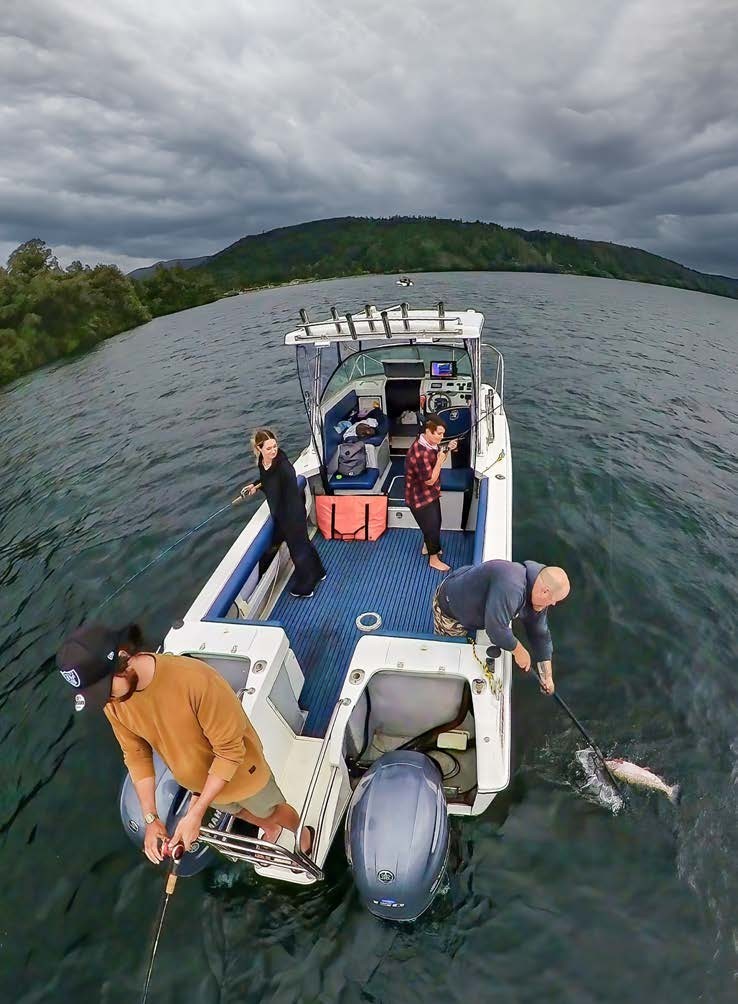
Whakatāne is only a short drive away from the trout fishing on the Rotorua lakes and some great local rivers.
Striped, blue and black marlin, plus big eye and southern bluefin tuna are caught every year off Whakatāne and although not as prevalent as in some other areas in NZ, they are there if you wish to put in the hours chasing them.
Because of the lack of yellowfin numbers over the last decade or so, many have turned their hands to daytime dropping for swordfish. Deepwater trenches and seamounts are abundant off the Whakatāne coastline, and with that comes good numbers of swords, which many keen Kiwi anglers have now discovered thanks to the daytime technique pioneered by Dr Ruben Jean from Venezuela in 1992 (not by others who claim to be the pioneers of it…).
With good, deep structure relatively close to shore, other deepwater species like hāpuku, bluenose, bass and gemfish are popular recreational species to catch here. Tasty tarakihi are very common off the Whakatāne coastline and can be caught in relatively shallow water at certain times of the year, compared with other regions.
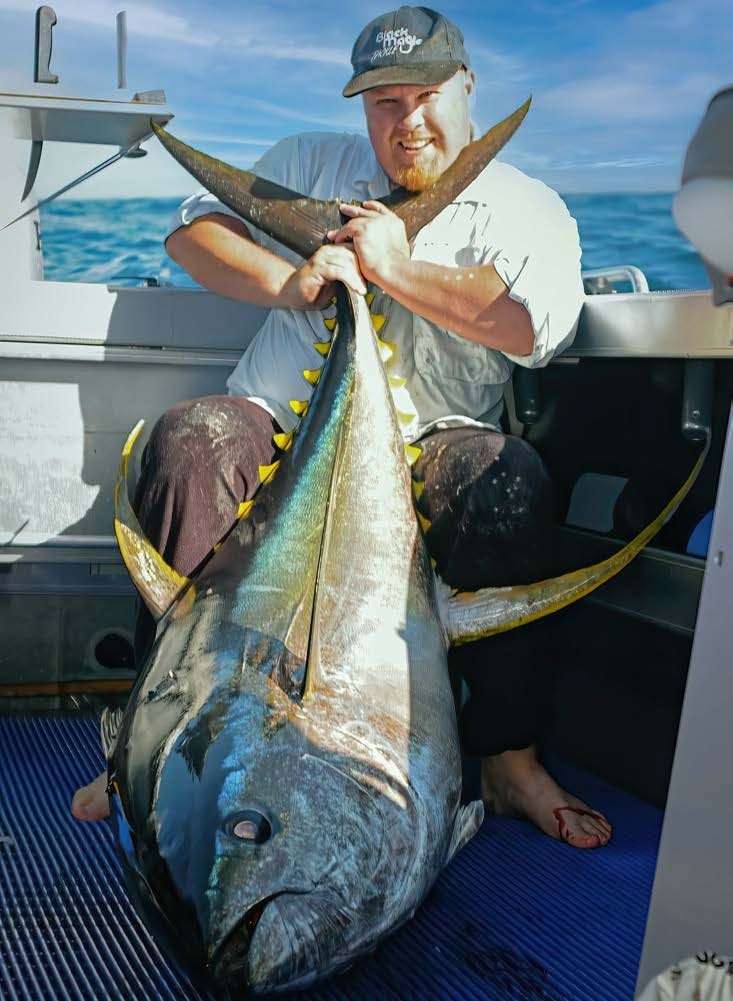
Memories of another era. Chris with a prime yellowfin tuna caught during the sport fisheries’ heyday.
“ FOR MANY YEARS, WHAKATANE WAS NAMED THE YELLOWFIN TUNA CAPITAL OF NEW ZEALAND… ”
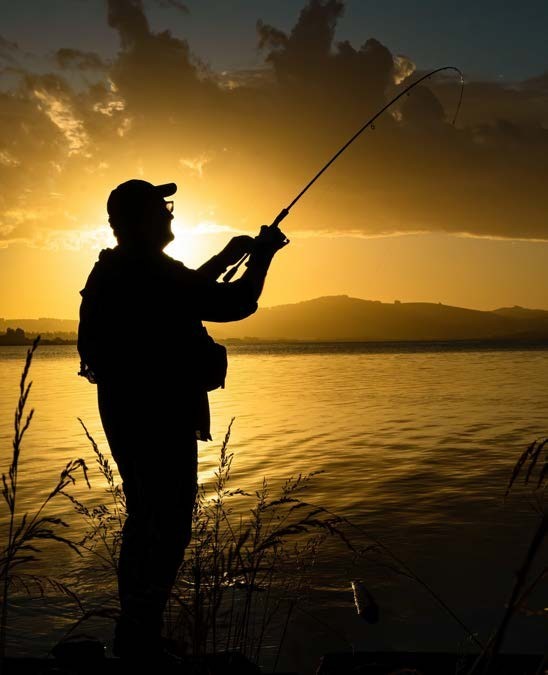
1) Hooked up at dusk.
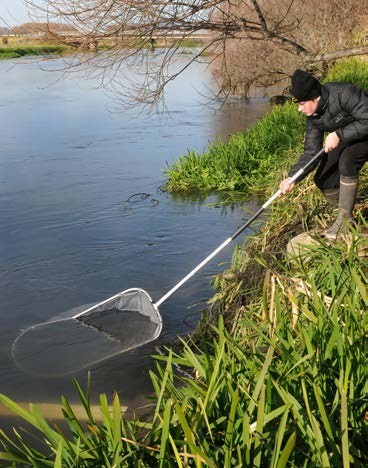
3) Whitebaiting is a popular pastime throughout the Whakatāne region during the season.
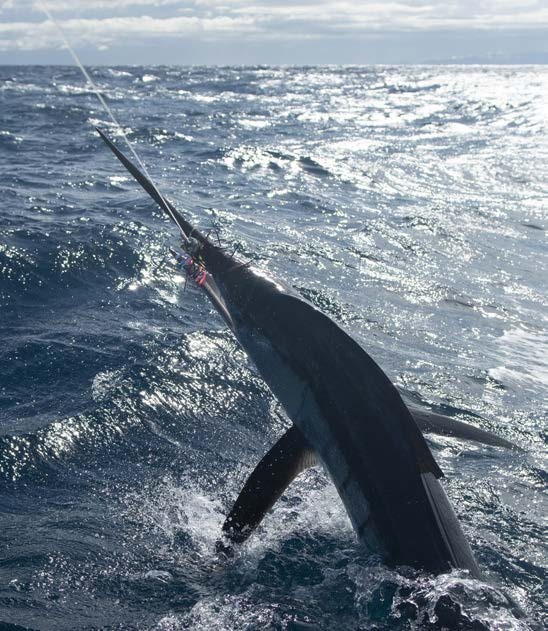
2) Over the summer months billfish are regularly caught offshore.
Snapper are here all year round, with some really ‘big reds’ available to those who wish to focus on them. Every year Whakatāne produces snapper over the magical 30lb mark and like anywhere, mega snaps of this size are not common. Anglers heading a little further east down the coast from Whakatāne towards Te Kaha and Waikawa Point will commonly encounter 20lb-plus reds, especially in late December through January and February. Whale Island and the Raurima Islands off Whakatāne always produce excellent results if snapper are your target species and you don’t want to travel too far.

4) Josh Jennings with a prime Rotoiti trout caught jigging.
Flounder are commonly caught in the Ōhiwa Harbour netting or spearing.The rivers that flow out from the Whakatāne region all produce good whitebait numbers, too – you have just got to get to the spot ahead of the hordes chasing this delicacy.
Kahawai are thick off most of the river mouths that surround Whakatāne during the summer months. They are a very popular, locally caught species because they are so common and easy to catch from the shoreline. With good numbers of kahawai, there’s no real surprise that kingfish aren’t far away as kahawai are a major part of their diet during the summer here.
If surfcasting is your thing, the beaches – particularly west of Whakatāne towards Tarawera and Matatā – produce epic snapper fishing from the beach – not yielding huge fish but good numbers of perfect eating-size snapper. Over the evening’s change of light, it’s relatively easy to secure a good feed for friends and family with minimal effort.
The bigger fish off the beaches often turn up in May, but good snapper can be caught all year round here, and it’s just a matter of putting your bait in the right place at the right time (as always).
I’ve been very fortunate to call Whakatāne home for over 20 years. I travel and fish throughout the country regularly with my job as a tackle company representative. I don’t believe there is a better place for the variety of fishing options and opportunities for those who love spending quality time outdoors, than this special part of this place we call home.
If fishing options are what you are looking for, look no further than Whakatāne… this place has it all!